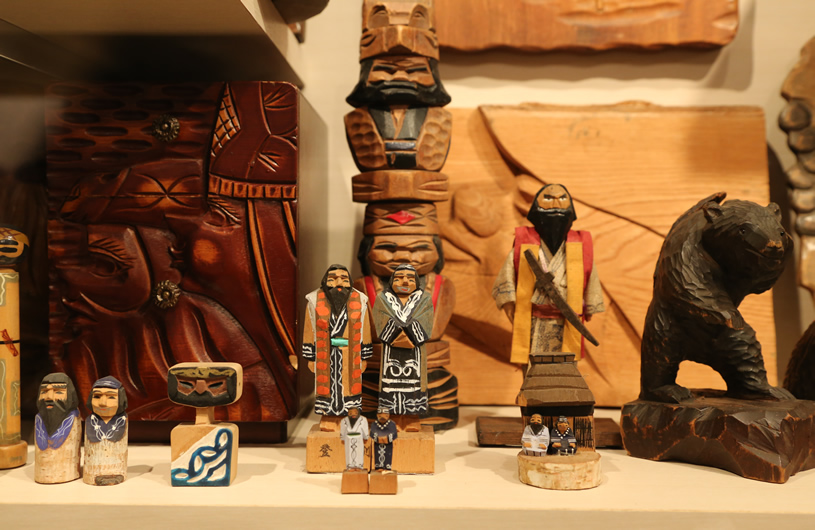
"Ainu Souvenir" collection of Yukimasa and Tokie Yamazaki

"Ainu Souvenir" collection of Yukimasa and Tokie Yamazaki
When asked what a typical Hokkaido souvenir would be, even now, many people would say Ainu woodcrafts. Philipp Franz Balthasar von Siebold (1796 –1866), who introduced contemporary medicine to Nagasaki and Japan, collected an enormous amount of materials related to Japanese nature, history and culture, and among these items were many specimens of Ainu woodcraft. According to Associate Professor Koji Yamazaki of Hokkaido University, the contents of the Siebold Collection (National Museum of Ethnology in Leiden, Netherlands) have strong souvenir-like characteristics.

"Showa Retro Ainu Souvenir Grand Exhibition" opened at Akan Ainu Theater

Hair bands featuring Ainu patterns, made by Kohei Fujito

Kohei Fujito
New souvenir development becomes an effective point of view, says Sapporo International University Associate Professor Satomi Chiba. "Creating souvenirs is like creating the face of the region. From the perspective of the field of study, souvenirs are the gateway to knowing about the foodstuffs, history and culture of the region. Future souvenirs have so much potential." What resources or personality does the land in which we live possess? We have to consider this with awareness of how the town is seen from the inside and from the outside. In other words, souvenir development is nothing more than product creation that attempts to draw an appealing self-portrait of the region.
This complex, thrilling magnetic field of tourism is, in whatever era, filled with the power to actively drive manufacturing. We'd like you to focus your attention on the souvenirs of Hokkaido, the northern region of the Japanese archipelago, which possesses a unique culture and history.

New Chitose Airport, the forefront of modern Hokkaido souvenirs